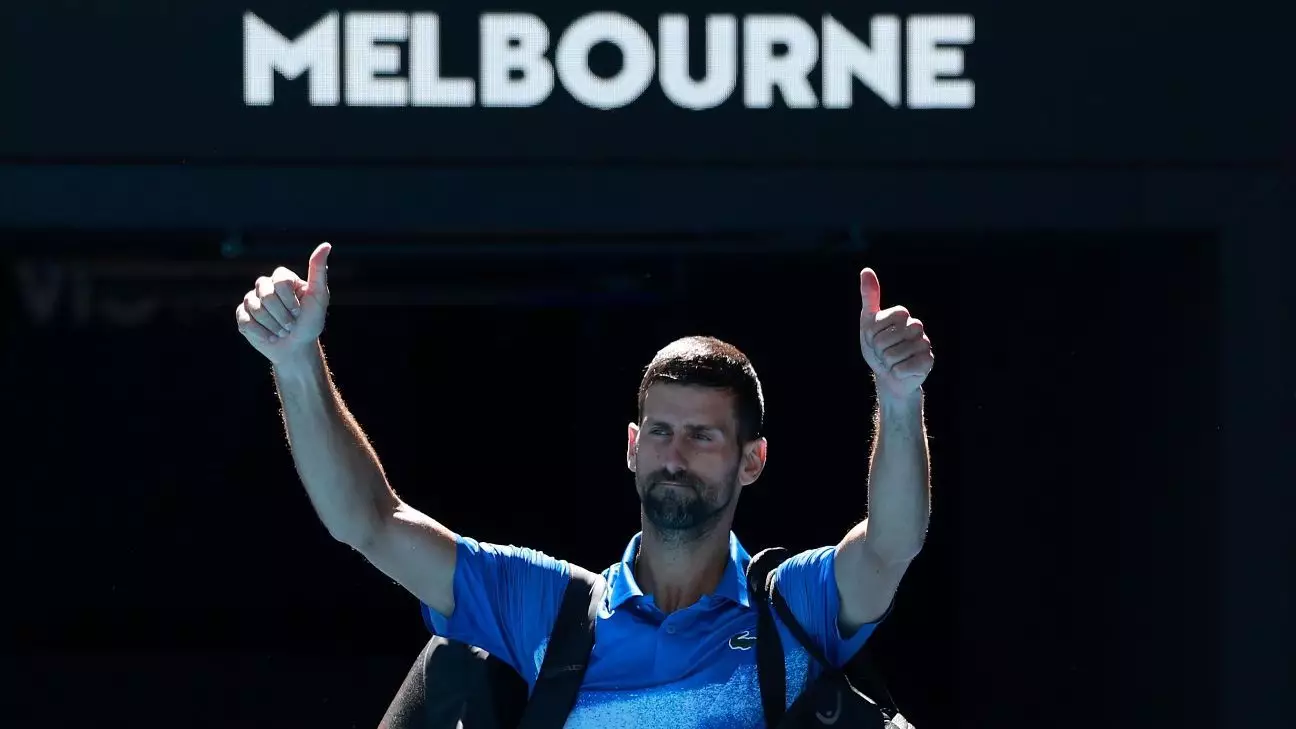Novak Djokovic’s unexpected exit from the semifinal at the Australian Open sent shockwaves through the tennis community. As a legendary figure with a record of 24 Grand Slam titles, his sudden retirement against Alexander Zverev, following a tiebreak loss in the first set, left fans both stunned and disheartened. This intensifying drama unfolded shortly after Djokovic posted an MRI scan of his injured left hamstring on social media, a move that turned heads and drew comments from countless “experts” across various platforms.
The buzz surrounding Djokovic’s injury culminated when he faced jeers from the crowd as he walked off the court. The controversy surrounding player behavior in professional sports was amplified by the ignition of boos, showcasing a tension between the devoted fans who wanted to see their champion battle on the court and the reality of physical limitations that athletes face.
In the immediate aftermath of the match, Zverev’s defense of Djokovic resonated with many viewers. He urged fans to appreciate the dedication and sacrifices Djokovic has made for the sport, highlighting the disrespectful nature of booing a player who was clearly struggling. This event sparked a larger conversation about sportsmanship and the expectations placed on top athletes. In his on-court interview, Zverev eloquently articulated the frustrations of professional athletes when their true struggles remain overlooked by the audience’s fervor for entertainment.
As the sporting world turned its attention to Djokovic’s physical health, the lack of detailed information about his injury became a topic of debate. The nuance of a torn muscle is rarely understood by those outside the sports medicine sphere, which may have fed into the environment of conjecture flourishing online. The absence of an explicit recovery timeline further fueled speculation regarding the athlete’s return to the court.
Athletes like Djokovic showcase incredible physical resilience, yet they remain susceptible to injuries that can derail their careers or seasons. His recent performances illustrate the relentless pursuit of excellence that characterizes elite athletes, who often push their bodies beyond acceptable limits. Djokovic opened up about his struggles after the quarterfinal match against Carlos Alcaraz—a match in which he required tape to secure his upper leg. These measures underline the importance of reading physical warning signs during high-stakes competitions.
In his own words, Djokovic shared insight into managing the excruciating pain he faced, illustrating the fine line athletes tread between ambition and caution. His experience serves as a reminder that behind the glitz and glory of sports lies the human experience filled with vulnerabilities and challenges that can profoundly influence an athlete’s career.
As the dust settles on this episode, the sporting community awaits updates on Djokovic’s recuperation. Fans and commentators alike are left pondering the implications of his injury on his aspirations for the year. For Djokovic, recovery will not only be physical but also mental as he navigates the expectations and pressures inherent to his legacy.
Djokovic’s situation is emblematic of the broader themes of resilience, respect, and the grueling nature of professional sports. His challenges remind us of the fine balance between pushing one’s limits and recognizing the need for rest and recovery.


Leave a Reply